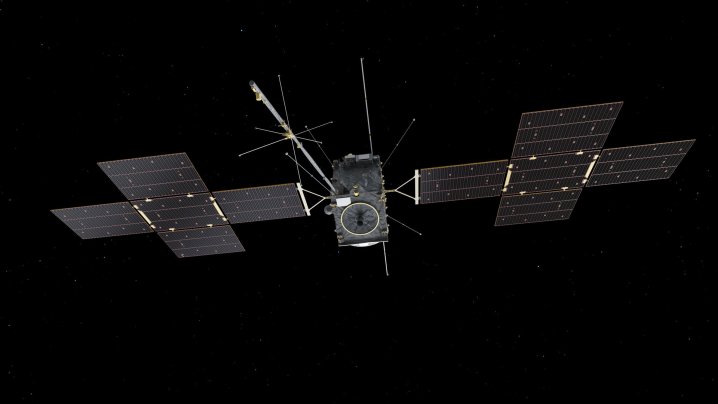The European Space Agency’s Juice spacecraft is now fully deployed and on its way to study the icy moons of Jupiter. Launched in April, the Jupiter Icy Moons Explorer spacecraft has been through a complex and at times challenging deployment process over the past six weeks to unfold into its final form for its journey to Jupiter.
Large spacecraft like Juice need to be folded up during launch so that they can fit into the nosecone of their launch vehicle — in this case, an Ariane 5 rocket. Once the spacecraft has been deployed from the rocket, it can begin the process of unfolding while it travels through space.

The first parts to be deployed were the solar panels, which unfolded shortly after launch to their large size of 27 meters across. They provide power for the journey and the upcoming science mission. A communication antenna called the medium-gain antenna was deployed shortly after launch as well.
The challenge came from attempts to deploy a second antenna called the Radar for Icy Moons Exploration (RIME) antenna. At 16 meters long, this antenna is for a radar instrument that will be used to look beneath the surface of the icy moons. It was supposed to deploy five days after launch, but the antenna became stuck at the top of the spacecraft and couldn’t be released from its mounting bracket.
The Juice spacecraft has small, low-resolution monitoring cameras pointed at deployment points, so engineers were able to observe the antenna and see that the first section of the antenna had unfolded, but the other sections had not. The cameras did show some signs of movement, however, so there was hope. The images indicated that a stuck pin was holding the antenna sections in place, so the team fired Juice’s thrusters to shake the entire spacecraft. They also tried maneuvering the spacecraft into sunlight to help warm it up, in the hopes that would loosen the pin.
Neither of those approaches fixed the problem, so after several weeks, the team decided on a more drastic intervention, firing a device within the stuck bracket called a nonexplosive actuator. This component is designed to release a bracket by delivering a shock, which jiggled the stuck pin and let the bracket release. That finally allowed the last parts of the antenna to unfold and lock into place.
Other components like the magnetometer boom and more antennae were deployed without issue, and last week ESA announced that Juice is fully deployed as planned. With the spacecraft in configuration, now the team is ready to begin testing its instruments while the craft prepares for its first planetary flyby in 2024.
“It’s been an exhausting, but very exciting six weeks,” says Angela Dietz, deputy spacecraft operations manager for the mission, in a statement. “We have faced and overcome various challenges to get Juice into the right shape for getting the best science out of its trip to Jupiter.”



